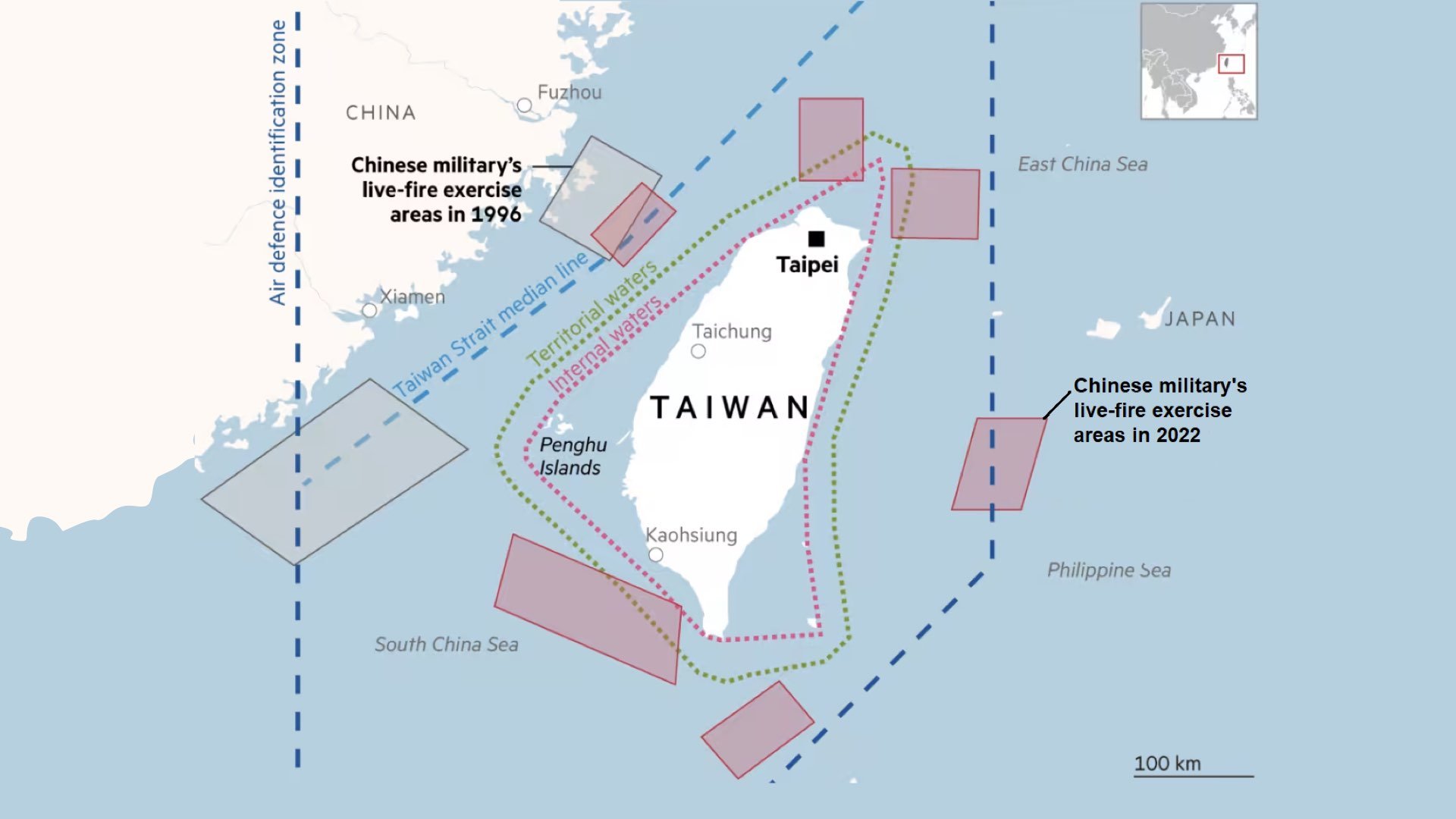East Asia: Impact of China and Taiwan conflict on shipping
Map of Taiwan showing Chinese live-fire exercise zones in 1996 vs 2022.
6 September 2022
The Taiwan Strait is a key shipping route, with 88% of the world’s largest ships by tonnage passing through it. Recent Chinese military exercises in the strait have caused little disruption to traffic, but a recent US state visit to Taiwan triggered a significant reaction from China that has caused concerns about future impacts of the China - Taiwan conflict. Analyst Katie Zeng Xiaojun has an update.
By Katie Zeng Xiaojun North, South and Central Asia Analyst
The Republic of China (ROC), or Taiwan, has been governed separately from the People’s Republic of China (PRC) since 1949. It occupies an awkward place in international relations. Despite being a democracy of over 20 million people and an economy in the top tier globally by exports and imports, it is not widely recognised as a ‘state’ and is not a member of the United Nations. The PRC government in Beijing sees Taiwan as a breakaway province that it hopes to unify one day, which creates tensions in Beijing-Taipei and regional relations.
On 2 August, US House of Representatives Speaker Nancy Pelosi travelled to Taiwan, which to triggered a significant reaction from China. The US acknowledges the ‘one-China’ principle that there is only one Chinese government – in Beijing – but at the same time, it rejects the use of force to settle the dispute and has supported Taiwan militarily for decades.
The Chinese military responded to Speaker Pelosi’s visit with a large-scale military exercise in areas encircling the island and by firing missiles over the island as a show of force. Subsequently, on 15 August, they announced more military drills around Taiwan due to the arrival of a US delegation led by Senator Ed Markey. However, the deployment of ships and planes in response to Speaker Pelosi’s visit doubled. It is assessed that the difference in a show of force conforms to the Chinese perceived severity of offences.
Vessels in the the Taiwan Strait have so far manoeuvred around China’s drill zones to access ports in the region. Illustration: MarineTraffic
The Taiwan Strait is a key shipping route, with almost half of the global container fleet and 88% of the world’s largest ships by tonnage passing through it. While access to Taiwanese ports is not dependent on passage through the strait, entry to ports in Hong Kong and northern China often is. The recent Chinese military exercises have had a limited impact on container shipping in the Taiwan Strait, although vessels were manoeuvring around China’s drill zones to access ports in the region. It is assessed that China has no intention of blocking the trade routes because its trade volumes would also be affected if there were any vessel transit restrictions.
Other than a show of force in Taiwan, China has also imposed economic sanctions such as visa and food bans. They recently also sanctioned seven Taiwanese officials for supporting Taiwan's independence. However, the value of trade targeted by China’s sanctions contributes to a small fraction of less than 1% of Taiwan’s gross domestic product. The sanctions are likely a mere representation of China’s displeasure over Taiwan, thus explaining the minimal impact on Taiwan's economy.
China is likely to continue to put pressure on Taiwan through media assertions and military posturing in the coming months. They are likely to intensify their military drill frequency in Taiwan waters and attempt to cross the median line that divides the waters between Taiwan and China more frequently. China is also likely to impose more sanctions given that the Communist Party Congress will take place in the second half of 2022 and Taiwan is an important issue for the Party and President Xi Jinping.
The current political impasse between Taiwan and China is unlikely to be resolved in the short run. Nevertheless, there is a minimal impact on commercial vessels transiting the waters surrounding Taiwan, including the Taiwan Strait. The recent exercises were a demonstration of capabilities, however, and a showcase for how China could deploy its military forces in the future.


